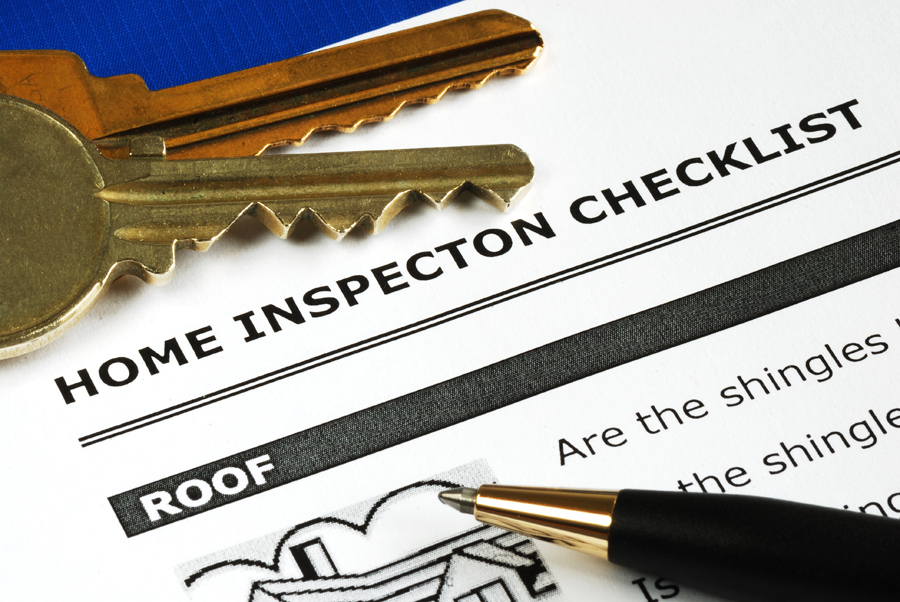
Your offer’s accepted! Now it’s time to get to work. Before we can close on the purchase of your new home, we need to take a few more steps to make sure the purchase is a sound decision.
Step 1: Buy with Confidence
Home Inspection
As the buyer, you have the opportunity to hire a professional inspector to evaluate the condition of the home. An inspection clause is included in the written contract given to the seller. The goal of a home inspection is to give you an objective, independent and comprehensive analysis of the physical condition of your potential new home and check for any safety issues that might otherwise be unknowable.
A professional inspector will check on the structure, construction and mechanical systems of the house. This usually includes checking:
• Electrical systems
• Plumbing and waste disposal
• Water Heater
• Insulation • Ventilation
• HVAC System
• Water Source and Quality
• Waste Disposal
• Pests • Foundation
• Doors
• Windows
• C eilings
• Walls • Floors
• Roof
• Radon Gas
• Asbestos
• Lead Paint
You will receive a written report of the inspection and an estimate of the cost of any and all repairs. If you choose to be present during the inspection, you can ask your inspector about unique features of the property and get his or her opinion on the necessary maintenance for each different area.
Depending on the results of the inspection, you will have the opportunity to:
• Get out of the written offer if major problems are discovered
• Renegotiate the purchases price to account for necessary repairs
• Negotiate that repairs are made by the seller before final purchase of the property
Property Survey
Your lender will require that a legal land survey be completed of any property on which they issue a mortgage so that they can obtain a clear lender’s title insurance policy.
A surveyor will determine:
- Whether the house is within the property borders
- Whether there are any encroachments on the property by neighbors.
- The extent to which any easements on the property may affect legal title.
The survey will also provide you as a new owner with invaluable information. The report will let you know exactly where the property lines are and will let you know if there are any building restrictions that could prevent you from adding new features to your home, like a new fence.
The amount of detail provided in a surveyor’s report varies based on the kind of survey you ask for. Obtaining more information will cost more money.
I recommend using the following organization for your home inspection:
Tony Alm with A-Pro Home Inspection Services 561-436-4427
Step 2: Clearing the Home Title
Simply explained, “title” is the right to own, possess, use, control and dispose of property. When you buy a home, you are actually buying the seller’s title to the home. A deed is the written legal evidence that the seller has conveyed his or her ownership rights to you.
Before the closing meeting when the actual transfer of ownership occurs, an attorney or title specialist generally conducts a title examination. The purpose of the title examination is to discover any problems that might prevent you from getting clear title to the home. Generally, title problems can be cleared up before settlement, but in some cases severe title problems can delay settlement, or even cause you to consider voiding your contract with the seller.
Some “clouds on title” can be corrected relatively easily while others can become quite complicated to remove. You should insist on being kept informed of every step in the title examination process. If title problems are uncovered, it is important for you to understand your legal rights.
What is Title Insurance?
Title insurance is the best way to protect yourself against title defects that have occurred in the past, which may not appear until after you’ve taken ownership of the property.
Before a title insurance policy is issued, a title report is prepared based on a search of the public records. This report gives a description of the property, along with any title defects, liens, or encumbrances discovered in the course of the title search. It is different than casualty insurance in that you pay a one- time fee and it protects against past (as opposed to future) events.
Title insurance will protect you against title defects that were not discovered in the course of the title search. If such a defect were discovered later, your title insurance would cover you.
If title problems are severe enough and not covered by insurance, you could actually lose your house. A title insurance policy protects you and your heirs against title defects for as long as you own your home.
I recommend purchasing title insurance from one of the following organization:
Mary Wilson with Advanced Title Solutions 561 536 0463
Niki Radabaugh with First American Title 954.995.2037
Richard Paduda with Performance Title (954) 748 4890
Step 3: Getting an Appraisal
Once you have determined that there are no defects on title and all inspection concerns have been resolved, it is time to order an appraisal.
An appraisal is an estimate of the value of a property made by a qualified professional. The appraisal of your prospective home is as important as your credit history in obtaining a mortgage. After all, the property you are purchasing serves as the collateral for the loan.
Although the primary goal of the appraisal is to justify the lender’s investment, it also protects you from overpaying. Your lender will generally hire the appraiser and will charge you as the buyer a fee for the service.
If the appraisal falls short of the amount you wish to borrow you may be refused a mortgage or offered a smaller amount on the mortgage. Your offer contract will be contingent on whether the appraisal comes in at or above the purchase price you and the seller have agreed upon.
Step 4: Closing
All the preparation is complete. Now it’s time for closing! Closing is the legal transfer of ownership of the home from seller to buyer. It is a formal meeting that most parties involved in the transaction will attend. Closing procedures are usually held at the title company or lawyer’s office. Your closing officer will coordinate the signing of documents and the collection and disbursement of funds.
In order to ensure a smooth closing, you will need to:
• Obtain a homeowner’s insurance policy and provide this information to your lender and/or closing agent.
• Review the Settlement Statement or HUD- 1 that your lender or closing agent will provide you 1 to 2 days before closing. These documents will contain a detailed description of all costs associated with the transaction, including the exact dollar amount you will need to bring to closing.
• Verify with your lender and/or closing agent any other items that you need to bring with you such as a valid driver’s license or other form of identification.
• Conduct a walk- through of the property prior to closing. This will give you an opportunity to see that the condition of the house is the same as it was at the time of contact. Additionally, you will be able to ensure that any repairs agreed to by the seller, based on the inspection, have been completed.
Next: Questions, Questions

